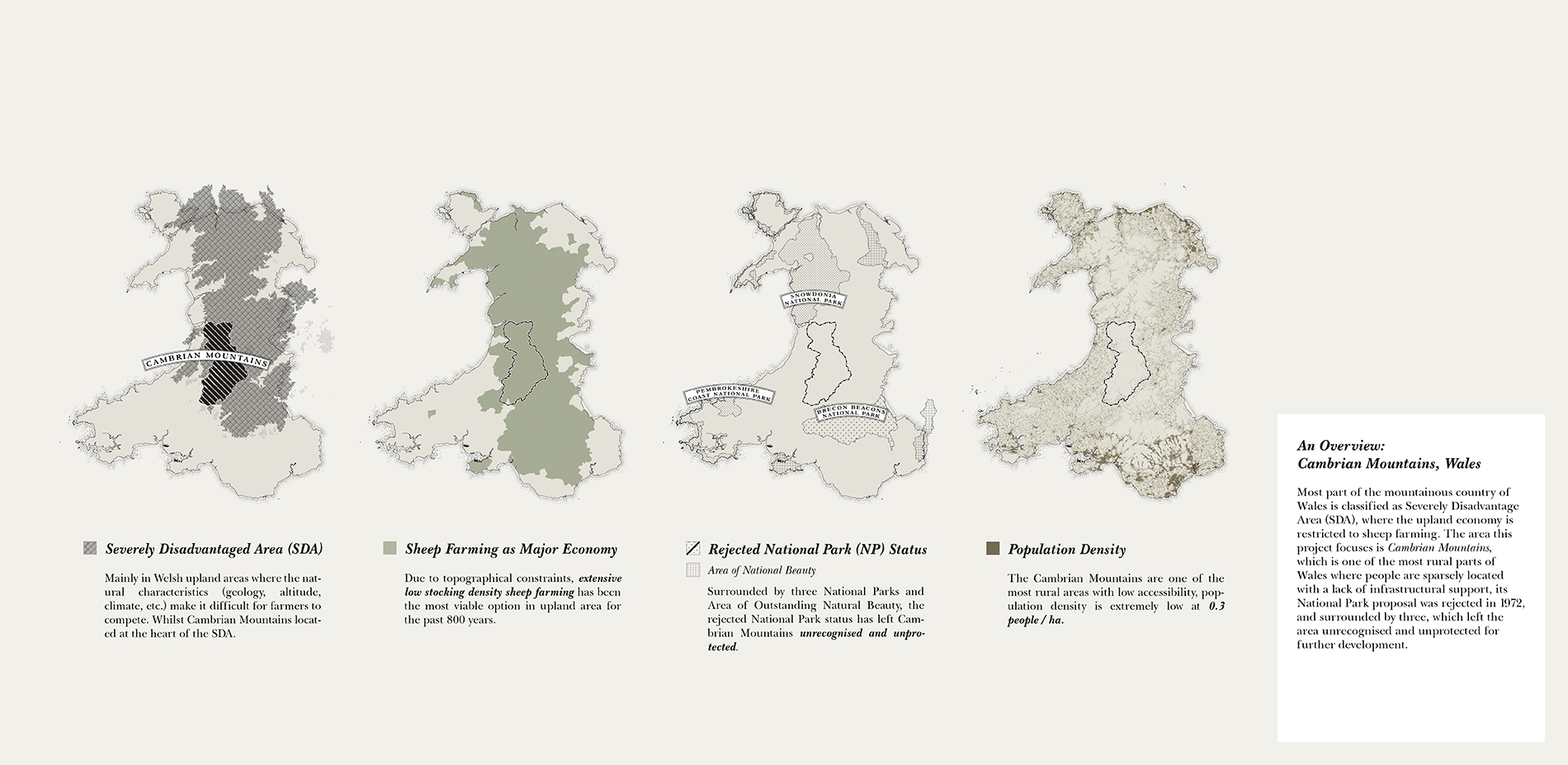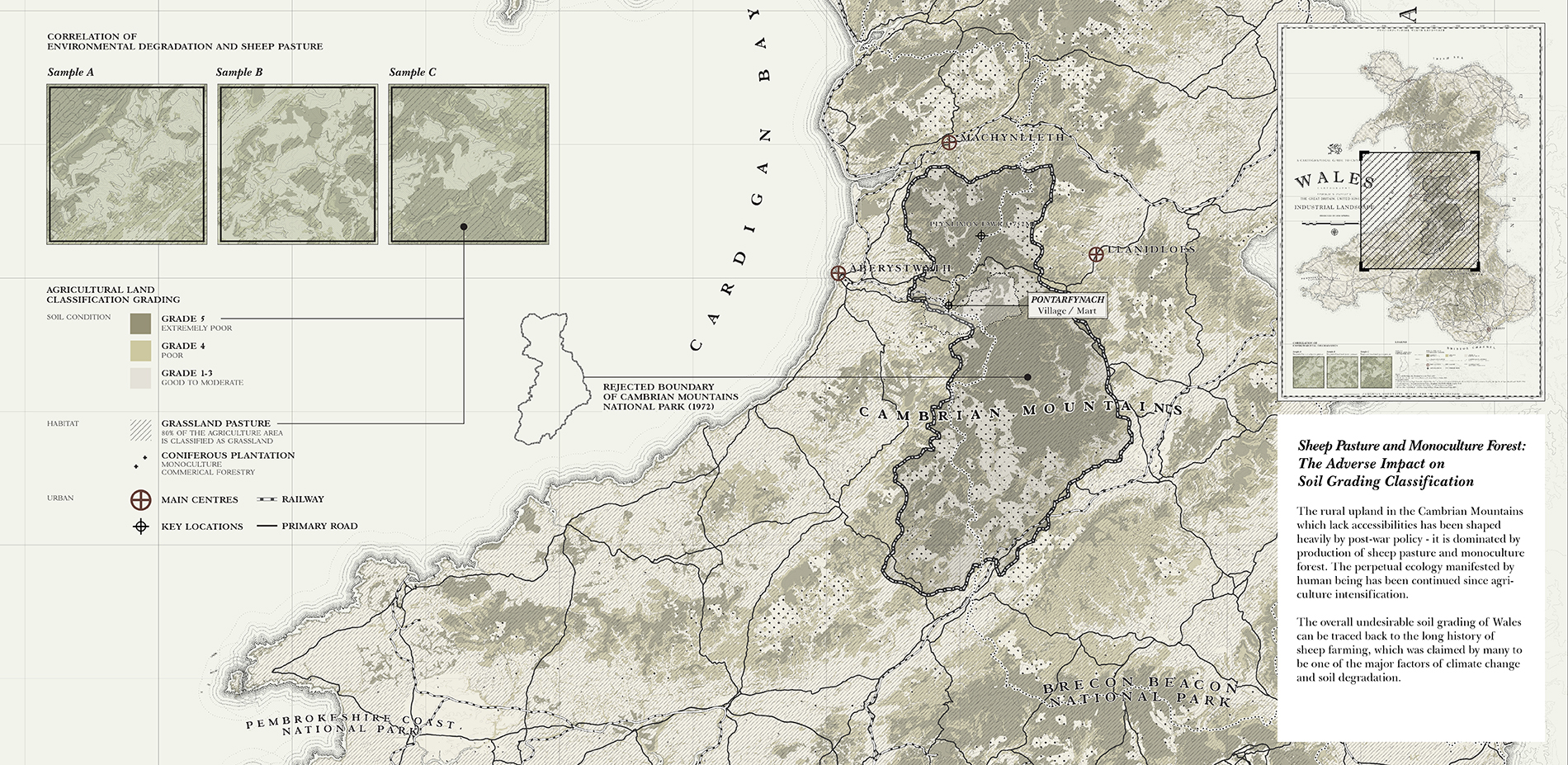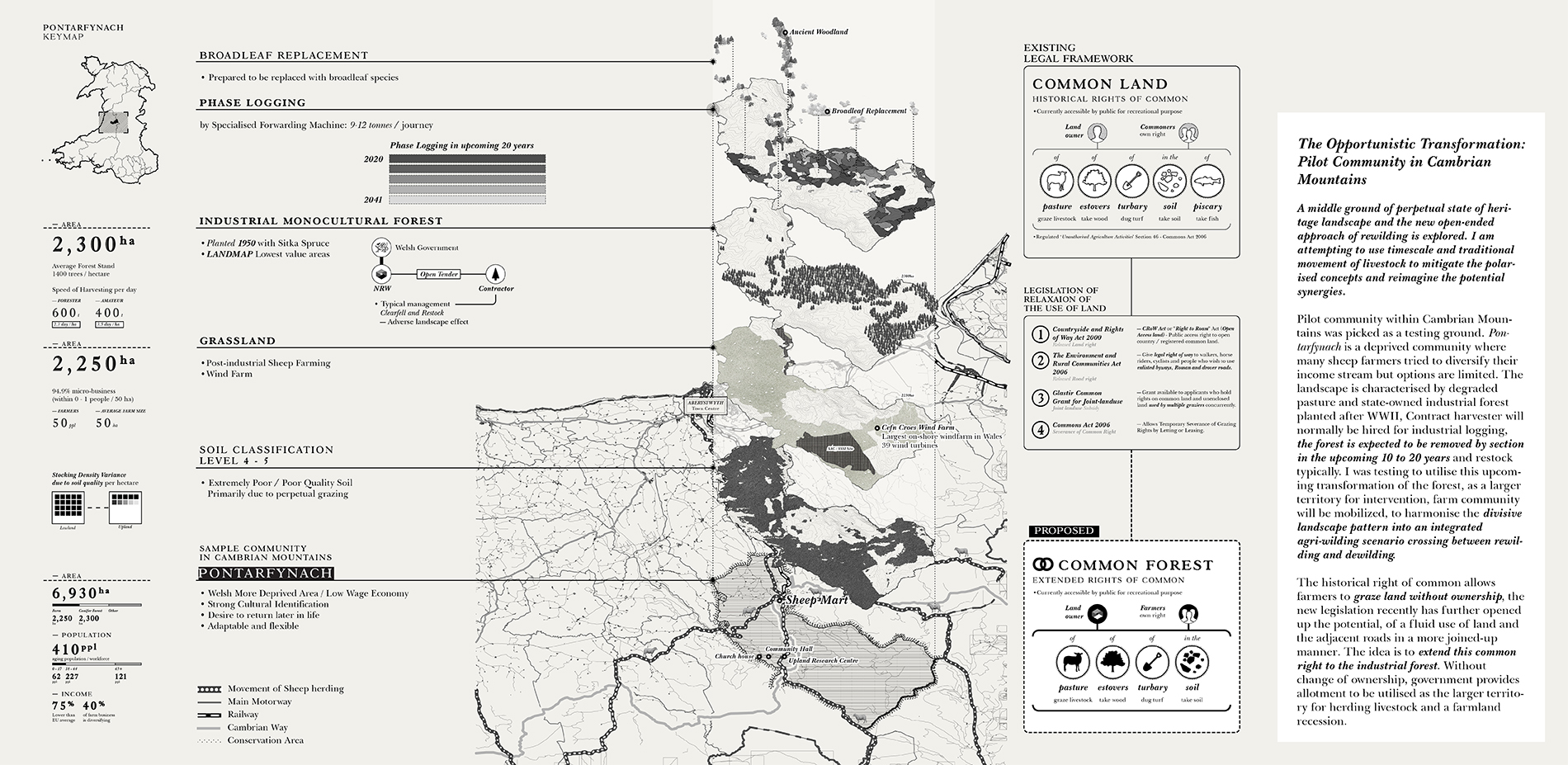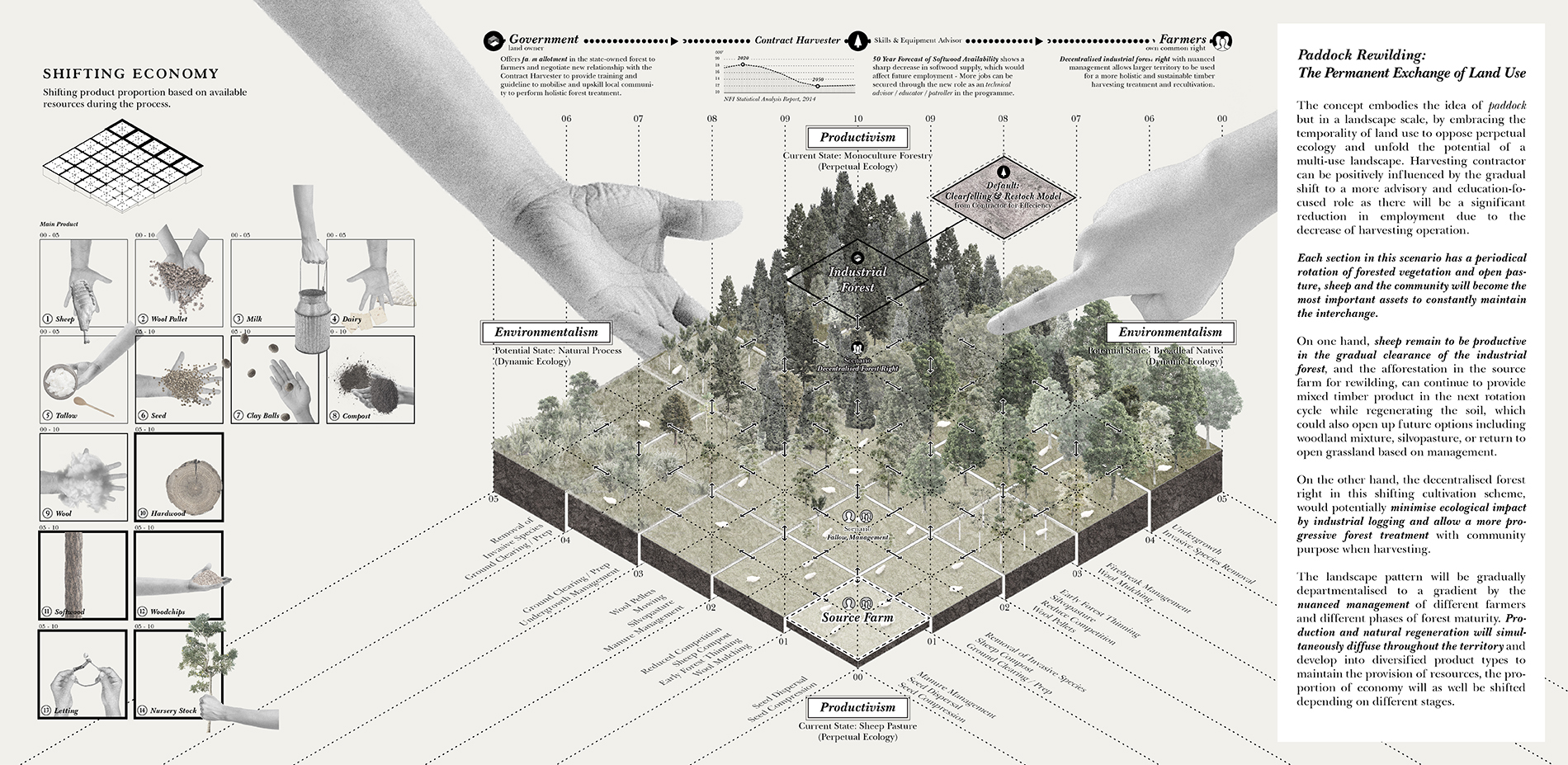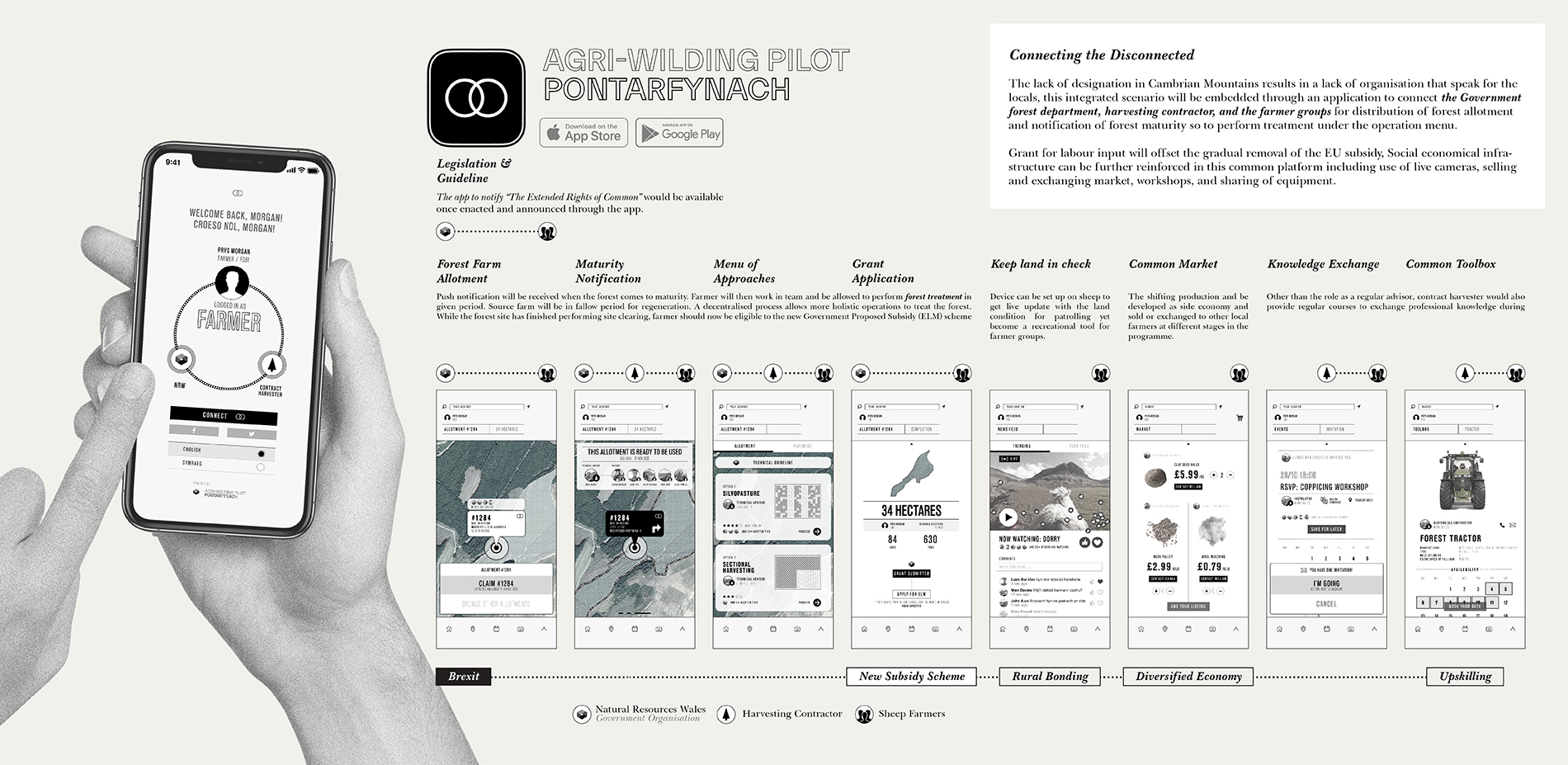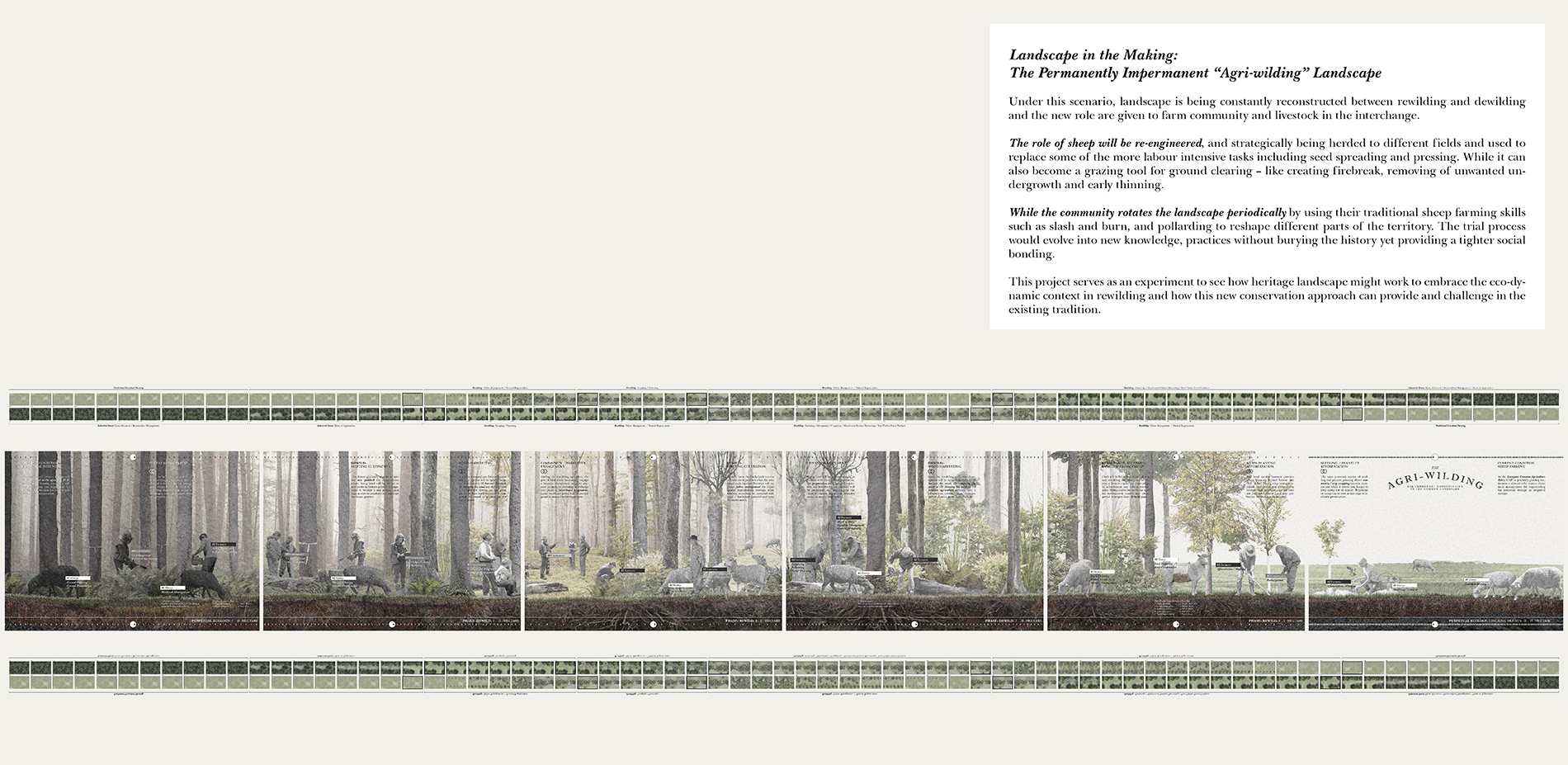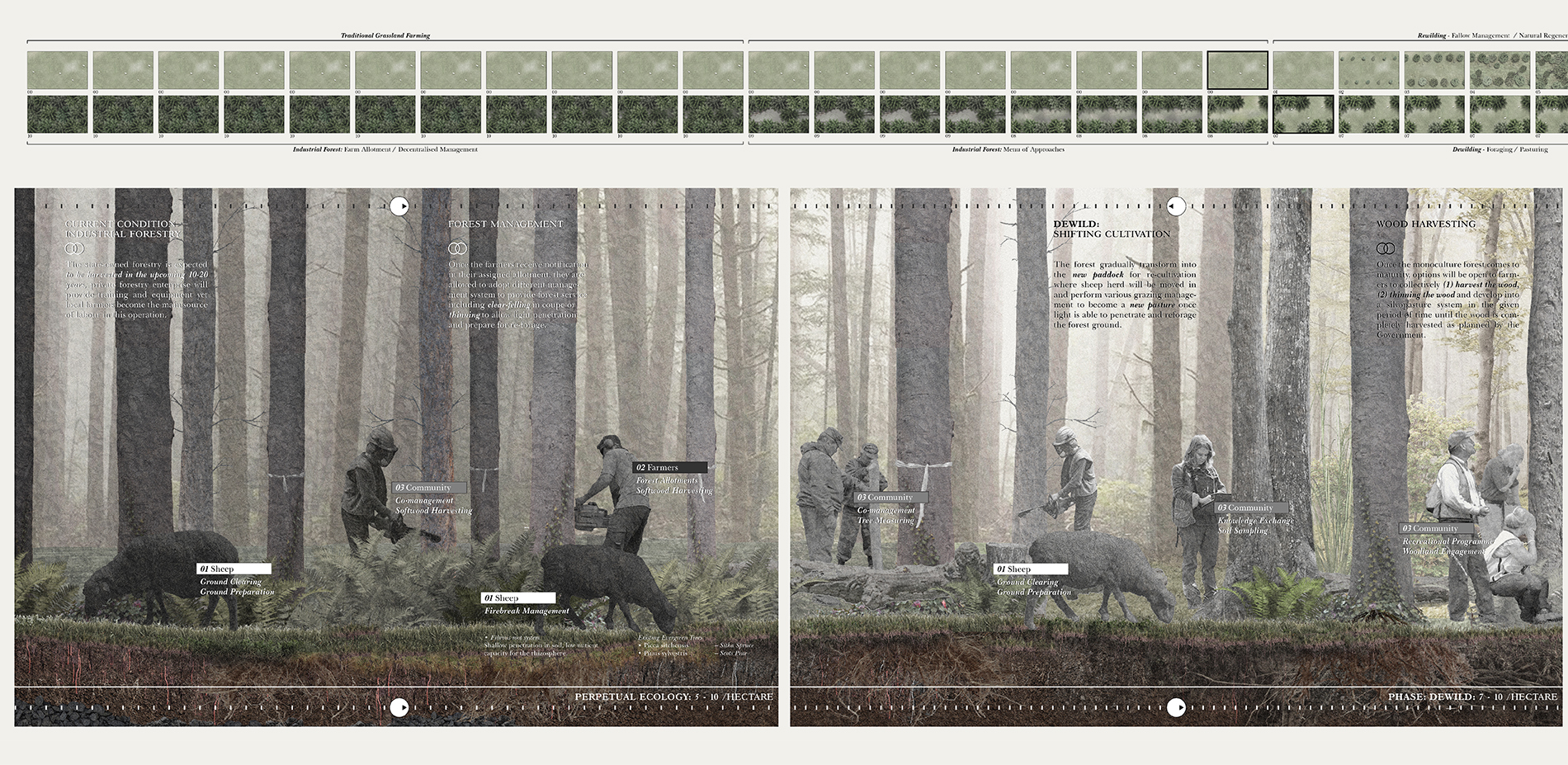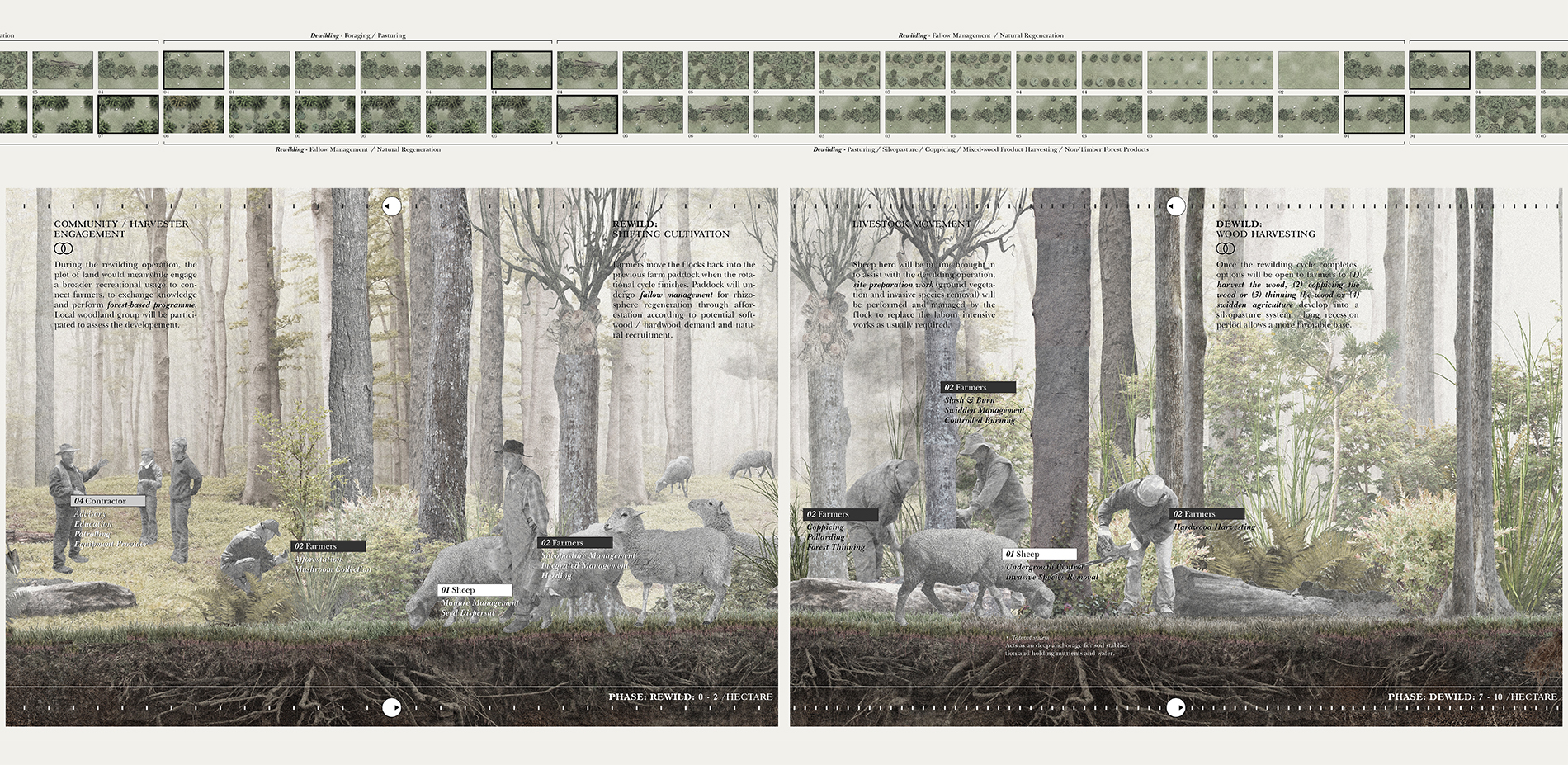Paddock Rewilding: An Agri-wilding Scenario for a Regenerative Rural Heritage Landscape in Post-productivist Cambrian Mountains, Wales
Award of Excellence
Analysis and Planning
Cambrian Mountains, United Kingdom
Shing Chun Chu
Faculty Advisors: Xiaoxuan Lu, ASLA
University of Hong Kong
There is an incredible amount of work displayed in Wales Paddock Rewilding. It is timely and important; as landscape architects we use agri-wilding to communicate the need to re-think land use. We appreciate how this proposal works with the economy and attempts to evolve the status quo. They show what the strategy looks like at a scale that is really manageable—at the scale of the farmer or the contractor. It’s a long-overdue conversation in a strong proposal.
- 2021 Awards Jury
Project Credits
Elizabeth Leven
Ecologist / Senior Landscape Architect
Dr. Paul Sinnadurai
Conservation Manager of thr Brecon Beacons National Park
Dr. Mariecia Fraser
Researcher
Esther Wakeling
Project Manager/Operations Support Officer of Cambrian Mountains
Erica Wing Yin Wong
The Second Brain
Project Statement
Does an antidote to our landscape exist to mend the impairment that was orchestrated by us? Under all the challenges of extreme weather, mass extinctions, severe pollutions - Global authorities are pulling out all the stops, desparately, to hopefully evade the ghastly future.
Rewilding, a novel eco-centric approach that is promoted across disciplines - to introduce pristine wilderness back into humanity and allow open-ended natural processes to regain dominance with minimal human control, this approach flourishes as a result of marginal farmland abandonment across Europe, has meanwhile sparked debate with farmers who live off the culture-saturated land that historically embraces active management, the predicament between production and environment is never resolved.
Paddock Rewilding investigates a middle ground to mediate and create synergies in two conceptually polarised value systems of heritage landscape and rewilding. Inspired by the indigenous pathway of ‘shifting cultivation’, this project examines how larger territories can be elaborated into a ‘permanently impermanent’ rotational scenario between ‘Rewilding’ and ‘Dewilding’, to offer a possible alternative to envision a balancing and sustainable land management typology.
Project Narrative
The earliest humans originated back in 2.8 million years ago while human has 200 thousand years of history, in the recent past millennia, the process of anthropocentric way of living – agriculture intensification has left a remarkable footprint to the environment; this perpetual ecology orchestrated by human ceaselessly has further led to a significant damage to the ecosystem, all kinds of environmental issues surfaced are pressing to be resolved these days.
‘Rewilding’ Movement and its origin
Rewilding, a recent term introduced in science by American biologist Soulé and Noss (1998), it is a clustered concept that lacks a conformed definition. Ideologically, it is an eco-centric alternative to introduce pristine wilderness back into humanity, allow open-ended and continuous natural processes to regain dominance in landscape to restore eco-dynamic with minimal human control.
This foreign passive management approach became predominant with the growing phenomenon of marginal farmland abandonment across Europe, where the overarching policy and conservation strategies are historically embracing active land management - The existing European Common Agriculture Policy (CAP), which devoted to fight rural exodus and farmland desertion by a subsidy system to maintain farmlands in agriculture condition, has been criticised for halting ecological succession. The traditional land management has made Europe currently the continent with the least ancient forest cover (Kaplan, 2009).
Case study in Post-productivism Cambrian Mountains, Wales
Upland landscape in mid-Wales, United Kingdom was studied as a miniature. Cambrian Mountains, with the rejected National Park status, have been maintained as a productive landscape for livestock and timber since WWI. The option-restricted and perpetual farming operation in the Severely Disadvantage Area (SDA) contributes significantly to the loss of vegetative cover and soil fertility in the Welsh upland.
The uneconomical sheep farms that rely heavily on European supports, are at the knifepoint where politicians and advocates regard the departure from European Union as an ‘once in a lifetime’ opportunity to construct an alternative future to rectify the inefficiency in CAP policy. Brexit intensified the discourse on rewilding to envision a policy-led ‘vibrant’ human-less wilderness in an unprecedented scale - the ambition bluntly sweeps across the farmlands that are still in operation. The pure form of rewilding in this context, has somewhat distorted into a profiteering propaganda by some largest organisations and land landowners for land hoarding and small farms acquisition, its lobbying power has meanwhile gained mass public funding and support by urbanite. The campaign has further been sugarcoated with its allegedly potential yet questionable economic value of ‘nature-based enterprise’ – broadly referring to ecotourism, even in the most inaccessible parts of Wales. Whilst the potential plummet of food produced in this sheep-excluded framework as a result shall be replaced by cultured meat and rely further on import market in order that vast amount of agriculture land can guaranteed to be released for organisation-led ‘rewilding’.
On the other hand, segments of methodology in rewilding are manifested in the latest consultation in the Government’s post-Brexit vision under the name of ‘Nature Recovery’ - to revamp farm subsidies by using future land management programme as the mechanism to deliver this pioneering change. Despite the massive objection to ‘rewilding’ by farmers, who have been upholding the intangible heritage and livestock traditions for centuries, the seemingly more ‘environmental’ discourses recently have been marginalising the culture-saturated landscape and livestock husbandry on different levels.
The Middle Ground of Perpetual Use of Heritage Landscape and Rewilding — Paddock Rewilding
'Paddock Rewilding' seeks to explore human-environment relationship by exploring a middle ground between perpetual use of heritage landscape and the novel non-anthopocentric approach of rewilding – two conceptually polarised ideologies that never crossed path under the current discussion, can potentially work in parallel.
A pilot community in Cambrian Mountains – Pontarfynach is selected to demonstrate the landscape intervention ‘Paddock Rewilding’, which is inspired by the indigenous pathway of ‘Shifting Cultivation’. By reimagining the upcoming transformation of the state-owned industrial forest that soon comes to maturity, as the catalyst to explore how the larger territory can be collaborated with the source farmland into a ‘permanently impermanent’ rotational scenario, between ‘Rewilding’ and ‘Dewilding’ - A constant and fluid shift between operational and regenerative use in landscape, and extends to the proportional rotation of rural economies between timber product and livestock product.
The intervention employs timescale, traditional movement of livestock and the historical right of the ‘Common’ to unlatch the potential land rhythm and hybridise farm management methods in post-Brexit era, the perpetual landscape pattern for production is envisioned to be gradually diffused throughout the territories along with natural regeneration. New roles are meanwhile given to the livestock, local wisdom and traditional farming practice to bridge with neoliberal conversation so that tradition can still be preserved while gradually phased into the future, to encompass a more sustainable and intricate relationship between human and landscape.
Plant List:
- Abies amabilis — Pacific Silver Fir
- Betula pubescens — Downy Birch
- Betula pendula — Silver Birch
- Larix kaempferi — Japanese Larch
- Nothofagus alpina — Rauli Beech
